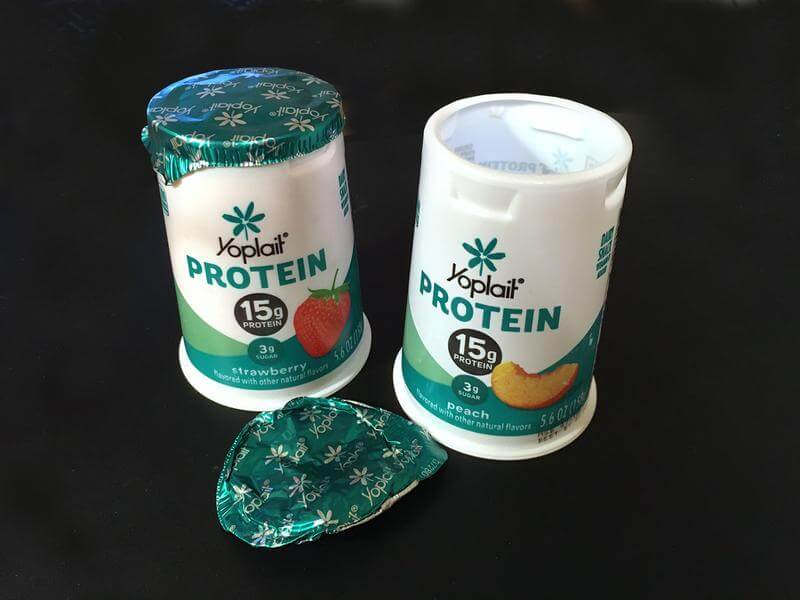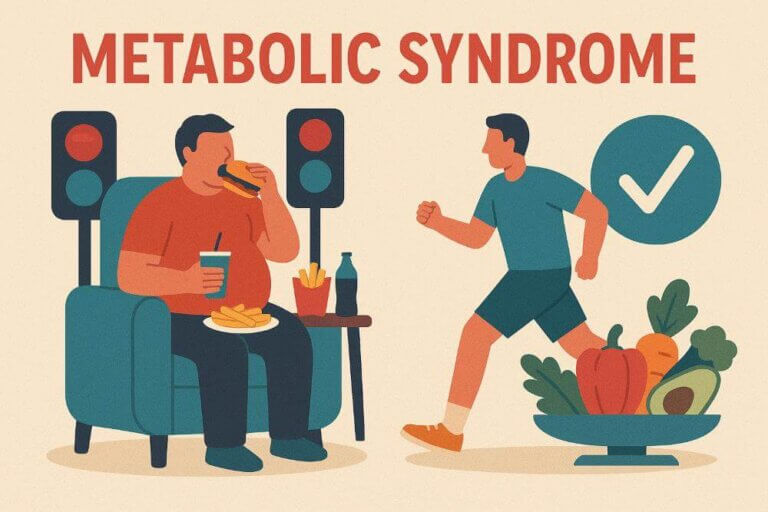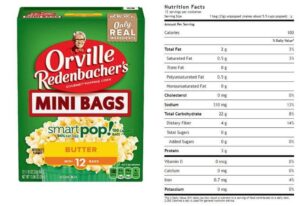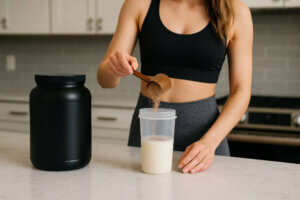5 min read, 912 words
Yoplait “Dairy Snack”, When Marketing Tricks Meet Nutritional Disappointment
Let’s be honest – most of us have been there. You’re cruising the dairy aisle, looking for a high-protein snack, and you grab what looks like Greek yogurt from the yogurt section. Except this Yoplait product isn’t yogurt at all – it’s a “dairy snack,” and the difference matters more than you might think.
First The Good
✔ High Protein—15g per container, with 60% of calories from protein.
✔ No Added Sugar — Only 3g total.
✔ High In Calcium — 35% of the Daily Needs 🎯
✔ No High Fructose Corn Syrup
✔ No Artificial Flavors
Now For The Bad and The Ugly
I gave this product two tries on two different days, probably about 10 days apart. The second try wasn’t any better than the first. Personally, I found this “dairy snack” to be very poor tasting. It has a gritty, chalky, pasty blend, weird kind of texture. For me, it left an unpleasant aftertaste as well. I was having trouble trying to describe what I was tasting so I thought I’d check the reviews. There were plenty of bad reviews to be found.
The Texture Disaster
The most consistent complaint across reviews is the texture, and it’s not pretty. Users describe it as “chalky,” “thick like glue,” and having an almost coating sensation that makes it “hard to swallow.” Some compared it to eating Elmer’s glue or chalk – not exactly the smooth, creamy experience you’d expect from what appears to be yogurt. This unusual texture likely comes from added thickeners and stabilizers needed to create a yogurt-like consistency without the natural fermentation process.
Artificial Flavor Overload
The taste profile is equally problematic. Multiple reviewers noted an overwhelming artificial sweetener taste (hello, sucralose!), strange aftertastes, and flavors that don’t match what’s promised on the label. The strawberry doesn’t taste like strawberry, the key lime pie is “excessively tart” without any actual lime flavor, and the mixed berry tastes like… well, not berries.
I tried the vanilla and the mixed berry. Neither one tasted as advertised. I have a couple left in the fridge but I’m no hurry to have another.
The Marketing Sleight of Hand
Here’s where things get interesting from a consumer awareness standpoint. This product is strategically placed in the Greek yogurt section, packaged to look like yogurt, but it’s not yogurt at all. Real yogurt contains live active cultures and is made through fermentation – this “dairy snack” is essentially a flavored dairy product with protein added and artificial ingredients to mimic yogurt’s thickness.
Label Investigation: The “Live and Active Cultures” Mystery
Here’s where things get really interesting – and frankly, a bit shady. A closer look at the packaging reveals a bullet point proudly claiming “With Live and Active Cultures.” But when you flip to the ingredients list (which is where the real truth lives), there’s a problem.
The Contradiction
The ingredients show “Cultured Pasteurized Ultra-Filtered Non-Fat Milk” and “Cultured Pasteurized Ultra-Filtered Reduced Fat Milk” – but here’s the kicker: pasteurization kills bacteria, including those beneficial live cultures. So if the milk was cultured BEFORE pasteurization, those cultures are now dead. It’s like claiming your product contains “formerly live cultures” – technically accurate but nutritionally meaningless.
Where Are The Cultures?
If Yoplait is legitimately adding live cultures to make their front-panel claim valid, those cultures should be clearly listed in the ingredients. Typical yogurt labels will list specific strains like “L. bulgaricus” or “S. thermophilus.” But scan this ingredient list all you want – they’re nowhere to be found.
Why This Matters
This explains a lot about the texture disaster. Real yogurt gets its smooth, creamy consistency and tangy flavor from live bacterial fermentation. It seems this product is trying to fake that texture using industrial thickeners and stabilizers instead of letting beneficial bacteria do the work naturally. No wonder it feels like “chalk” or “glue” – that’s essentially what artificial thickening agents can create.
Nutritional Red Flags
While it does deliver protein (the main reason most of us would grab it), you’re also getting sucralose, natural flavors, and various thickening agents instead of the beneficial probiotics and simpler ingredient list you’d find in actual Greek yogurt. Real Greek yogurt naturally provides comparable protein content while delivering gut-healthy bacteria and typically fewer artificial additives.
The Bottom Line
For fitness enthusiasts and health-conscious consumers, this product represents a classic case of marketing over substance. You’re paying for protein you can get from real Greek yogurt, but you’re sacrificing taste, texture, and nutritional quality in the process. Multiple reviewers mentioned they’d rather “get protein other ways” – and honestly, that’s solid advice.
This is exactly why reading ingredient lists matters more than front-of-package marketing claims. Real Greek yogurt doesn’t need to shout about its live cultures on the front – they’re clearly listed in the ingredients because they’re actually there doing their job.
Better Alternatives
Stick with actual Greek yogurt brands that clearly state “yogurt” on the label and contain live active cultures. Your taste buds, your gut health, and your fitness goals will thank you.
This one, Yoplait Dairy Snack, is a solid three thumbs down!
I have posted many better alternatives. My suggestion, choose one of these instead. Or one of many others available today.
- Oikos Triple Zero
- Too Good Fruit on the Bottom
- Siggi’s Low Fat
- :ratio Protein 25G
- Fage Total 0%
- Chobani Zero Sugar
- Simple Truth Zero Sugar Vanilla, (Dairy Blend)
- Meltemi Premium Greek Yogurt
– Coach Ken 🚀
Which protein type digests the slowest, making it ideal before bed?
Brought to you by your FNN coaches!







